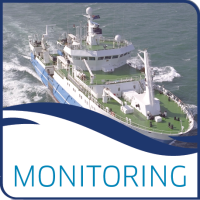Scottish Marine and Freshwater Science Vol 8 No 24
A small number of phytoplankton species have the ability to produce algal toxins which can accumulate in filter feeding bivalves such as oysters, scallops and mussels. The bioaccumulation of algal toxins can potentially cause serious health issues to shellfish consumers. Countries with a shellfish aquaculture industry (such as Scotland) have set up for their classified production areas a phytoplankton monitoring programme as part of their legal obligations (EC 854/2004 and amendments). This involves the regular collection of water samples to assess the phytoplankton community using light microscopy, with a particular emphasis on the toxin producing species. However, this technique lacks the ability to identify some key phytoplankton to a species level (e.g. Pseudo-nitzschia sp., Alexandrium sp.), which is critical to appropriately assess the potential toxicity of a phytoplankton bloom event. The objective of this project was to evaluate a microarray technique which was developed during the MIDTAL project (Microarrays For The Detection of Toxic Algae: http://www.midtal.com/) to identify phytoplankton to species level. Microarrays are modified glass supports on which are printed RNA probes that are species-specific. Each targeted phytoplankton species is defined by a set of probes that are statistically unique to each one. For the purpose of this project, water samples were collected offshore from Stonehaven (East coast of Scotland) over a two years period (starting in 2015) and processed using the microarray to assess its specificity and sensitivity in relation to the identification and potential semi-quantification of toxic strains of phytoplankton.
Data and Resources
| Field | Value |
|---|---|
| Publisher | |
| Modified | 2017-12-15 |
| Release Date | 2017-12-15 |
| Identifier | 3e6d291f-5097-4755-9d13-17118044a0d2 |
| Spatial / Geographical Coverage Location | Scotland |
| Temporal Coverage | 2015-01-01 to 2016-12-31 |
| License | UK Open Government Licence (OGL) |
| Author | |
| Data Dictionary | Integrated water samples were collected weekly (25/03/2015 - 19/09/2016) at Stonehaven (about three miles offshore) using a 10 m tube sampler. The contents of each integrated water sample were mixed into a 10 L carboy before 1 L aliquots were taken for light microscopy analysis and microarray processing. For the microarray, each aliquoted sample was filtered through a 1 µm, 25 mm nitrocellulose filter. The filter was then soaked in 1 mL of Tri-reagent and stored at -80°C until RNA extraction. In total, 72 phytoplankton samples were processed using that protocol. Another water sample aliquot was also processed for light microscopy analysis using the Utermöhl method (Utermöhl, 1931) to estimate the phytoplankton community. |
| Contact Name | Marine Scotland Science |
| Contact Email | |
| Public Access Level | Public |


